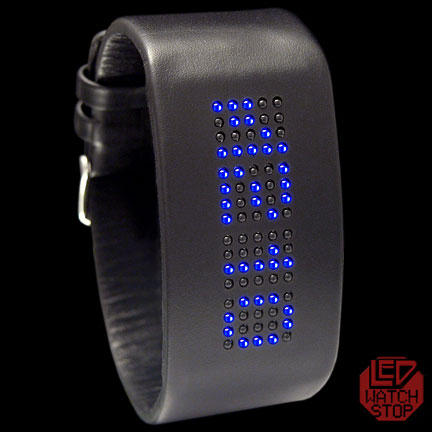Group members:
Sungmin Jang, Yichen Gu, Nomaan Dossaji
Our plan is to create a rechargeable battery that is charged with our body heat. We plan to use the battery to power something that doesn't require much energy. For instance we plan on using the battery to power a watch.
Weekly Journal
September 21st:
We finalized our project idea today. We mainly brainstormed what can be done with body heat. Our inspiration came from a Canadian high school girl who built a flashlight powered by body heat (hand heat). Many different designs of watch was explored and a conclusion was drawn that we should aim to build a functioning LED watch powered by body heat. The images below are some examples of LED watch (powered by battery).
We learned that we need peltier tiles, LED, resistors, and breadboard/circuit board.
Websites:
http://www.gizmag.com/body-heat-powered-flashlight/28113/
images:
http://thecluttershop.com/product/black-samurai-led-watch/#.VgmwfflVhBc
http://www.ledwatchstop.com/store/index.php
September 28th:
Today, the order was put in to get peltier tiles. Our goal is to explore how peltier tiles work. We decided that the project will be modified based on how much power the peltier tiles produce. We hope that by next week, we can play around with peltier tiles. We also had an idea of making a watch with only four LED lights to represent the 12 hours. Our primary goal is to build a working circuit with peltier tiles, LEDs, and rechargeable battery.
October 5th:
In this lab session, orders were placed for new Peltier Tiles and LED lights that we plan on testing. We modified our plan to creating lights on our palms (like Iron Man). If we can power these LED lights, we believe we can power a watch. Next lab we plan on testing the IV curve for the tiles.
Here are links to the data sheets for Peltier Tiles:
http://www.hebeiltd.com.cn/peltier.datasheet/TES1-12704.pdf
http://www.sos.sk/a_info/resource/i/TEC1-12706.pdf
October 12th:
Our five Peltier Tiles arrived today. We were able to test out the voltage it can produce and we were able to get around 40 mV when we put one side on the metal of the bench and our hands covering the other side. When we hooked up all tiles in series, we were able to get around 300mV. We could not power any LEDs in our kit and are currently trying to find an LED that requires much less voltage. We are trying to figure out what else we can power with this kind of voltage as well.
October 19th:
Today we played with the tiles and our smaller tiles came in. With the help of Professor Schmitz, we found out that if we input voltage, there will be a temperature difference between both sides. We are considering changing our project to cool or heat something up with the tiles.
October 26th:
Today, we modified our plan. We are planning to again see how much voltage Peltier Tiles can create. Then, use the Power Supply (voltage source) to mimic the Peltier Tiles voltage. Then, on a breadboard, the small voltage (DC) will be converted to AC, since the transformer can only step up AC. Then, the transformer will be built. The circuit will be finished when it is connected to the LED. After making sure that it is successful, replacing the Power Supply with the Peltier Tiles will conclude the prototype.
November 2nd:
Today we tried to learn how to make an oscillator. We also learned that it is very hard to make one with a very low voltage. So, we are requesting to buy a chip that includes an oscillator and a transformer. We are also requesting to buy a heat sink that will circulate the airflow. This will keep the bottom side of the Peltier Tile cool. We were also in the midst of making the transformer during this lab.
November 9th:
Our parts still haven't come in so we learned how to create a Joule-Thief. We will go to the ECE Shop to get those supplies and recreate that circuit. We also went to the ECE Shop and got a heat sink. Next week we hope to get our parts in the mail to be able to move forward.
November 15th:


